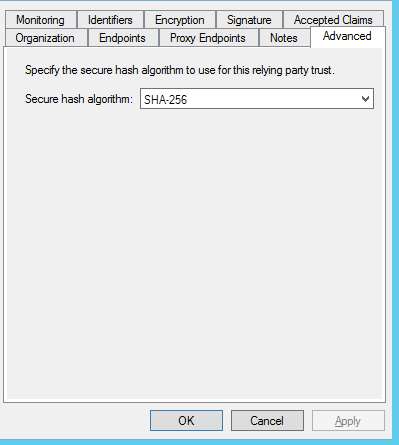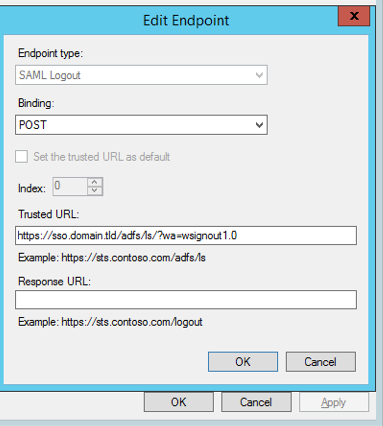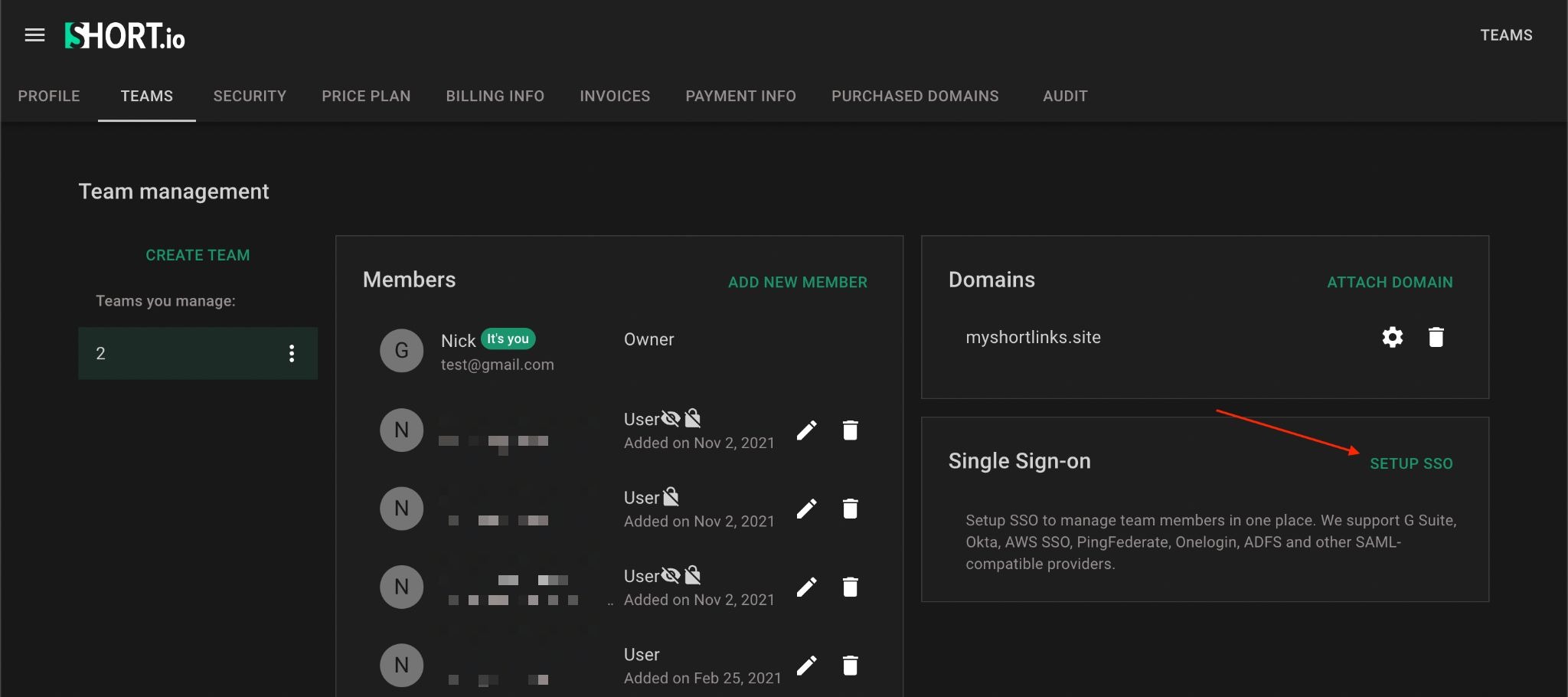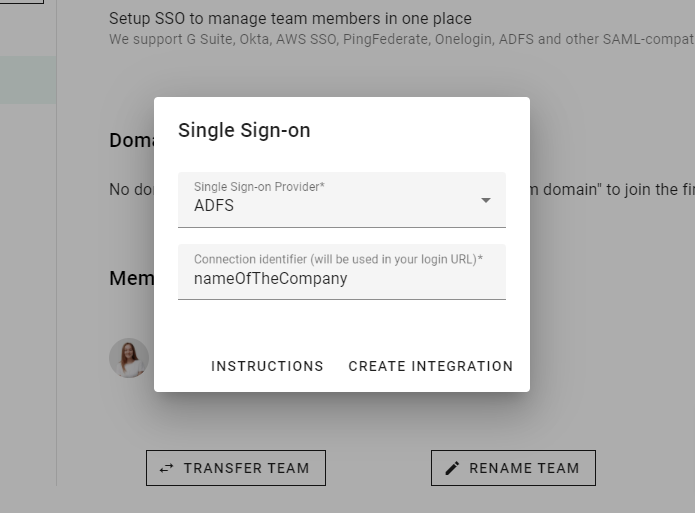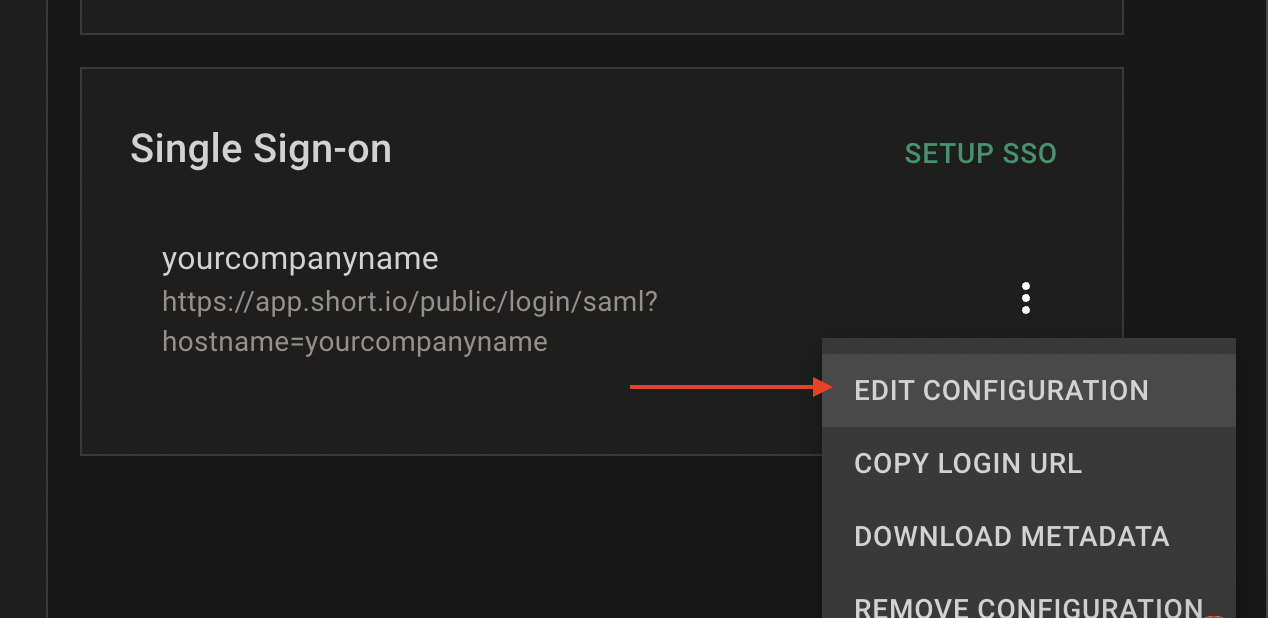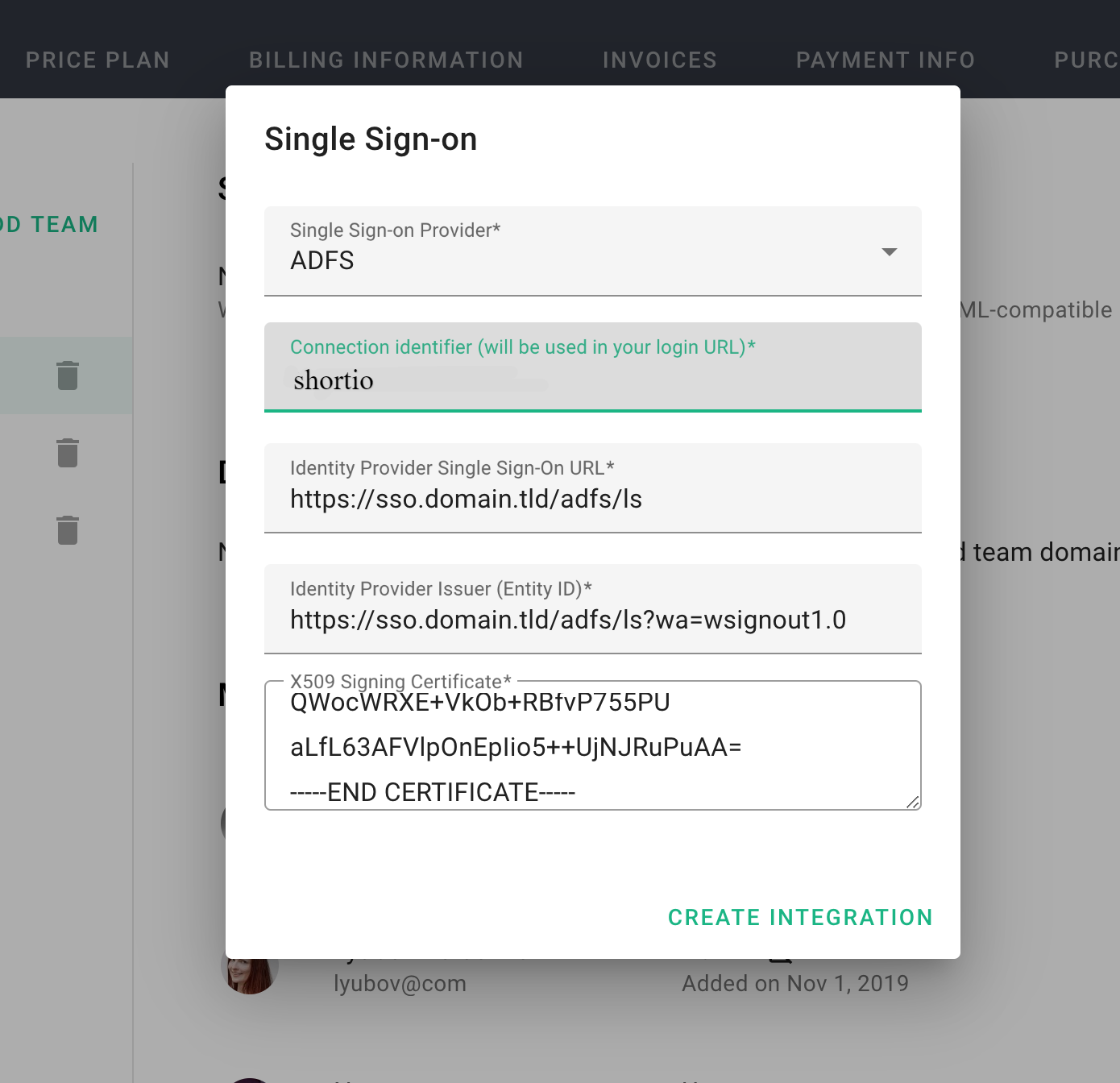Short.io supports Okta, AWS SSO, PingFederate, Onelogin, ADFS, and other SAML-compatible providers to configure SSO.
ADFS is a service provided by Microsoft as a standard role for Windows Server that provides a web login using existing Active Directory credentials.
Note: SSO is available on the Enterprise Plan.
Requirements
A server running Microsoft Server 2012 or 2008. This guide uses screenshots from Server 2012R2, but similar steps should be possible on other versions.
A SSL certificate to sign your ADFS login page and the fingerprint for that certificate.
An Active Directory instance where all users have an email address attribute.
Short.io Enterprise account.
After you meet these basic requirements, you need to install ADFS on your server. Configuring and installing ADFS is beyond the scope of this guide, but is detailed in a Microsoft KB article.
When you have a fully installed ADFS installation, note down the value for the 'SAML 2.0/W-Federation' URL in the ADFS Endpoints section. If you chose the defaults for the installation, this will be '/adfs/ls/'.
Step 1 - Adding a Relying Party Trust
The connection between ADFS and Short.io is defined using a Relying Party Trust (RPT).
Select the Relying Party Trusts folder from AD FS Management, and add a new Standard Relying Party Trust from the Actions sidebar. This starts the configuration wizard for a new trust.
In the Select Data Source screen, select the last option, Enter Data About the Party Manually.
2. On the next screen, enter a Display name that you'll recognize in the future, and any notes you want to make.
3. On the next screen, select the ADFS FS profile radio button.
4. On the next screen, leave the certificate settings at their defaults.
5. On the next screen, check the box labeled Enable Support for the SAML 2.0 WebSSO protocol. The service URL will be https://yourshort.domain/adfs/ls replacing yourshort.domain with your Short.io domain. Note that there's no trailing slash at the end of the URL.
6. On the next screen, add a Relying party trust identifier of yourshort.domain, replacing yourshort.domain with your Short.io domain.
Note: If you enter yourshort.domain, and receive a request failure error, you may need to enter your subdomain as https://yourshort.domain.
7. On the next screen, you may configure multi-factor authentication but this is beyond the scope of this guide.
8. On the next screen, select the Permit all users to access this relying party radio button.
9. On the next two screens, the wizard will display an overview of your settings. On the final screen use the Close button to exit and open the Claim Rules editor.
Step 2 - Creating claim rules
Once the relying party trust has been created, you can create the claim rules and update the RPT with minor changes that aren't set by the wizard.
To create a new rule, click on Add Rule. Create a Send LDAP Attributes as Claims rule.
2. On the next screen, using Active Directory as your attribute store, do the following:
1. From the LDAP Attribute column, select E-Mail Addresses.
2. From the Outgoing Claim Type, select E-Mail Address.
3. Click on OK to save the new rule.
4. Create another new rule by clicking Add Rule, this time selecting Transform an Incoming Claim as the template.
5. On the next screen:
1. Select E-mail Address as the Incoming Claim Type.
2. For Outgoing Claim Type, select Name ID.
3. For Outgoing Name ID Format, select Email.
Leave the rule to the default of Pass through all claim values.
6. Finally, click OK to create the claim rule, and then OK again to finish creating rules.
Step 3 - Adjusting the trust settings
You still need to adjust a few settings on your relying party trust. To access these settings, select Properties from the Actions sidebar while you have the RPT selected.
In the Advanced tab, make sure SHA-256 is specified as the secure hash algorithm.
2. In the Endpoints tab, click on add SAML to add a new endpoint.
3. For the Endpoint type, select SAML Logout.
4. For the Binding, choose POST.
5. For the Trusted URL, create a URL using:
1. The web address of your ADFS server
2. The ADFS SAML endpoint you noted earlier
3. The string '?wa=wsignout1.0'
The URL should look something like this: https://sso.yourdomain.tld/adfs/ls/?wa=wsignout1.0.
6. Confirm you changes by clicking OK on the endpoint and the RPT properties. You should now have a working RPT for Short.io.
Note: Your instance of ADFS may have security settings in place that require all Federation Services Properties to be filled out and published in the metadata. Check with your team to see if this applies in your instance. If it is, be sure to check the Publish organization information in federation metadata box.
Step 4 - Configuring Short.io
After setting up ADFS, you need to configure your Short.io account to authenticate using SAML. You'll use your full ADFS server URL with the SAML endpoint as the SSO URL, and the login endpoint you created as the logout URL. The fingerprint will be the fingerprint of the token signing certificate installed in your ADFS instance.
You can get the fingerprint by running the following PowerShell command on the system with the installed certificate:
C:\> Get-AdfsCertificate
Look for the SHA256 thumbprint of the Token-Signing type certificate.
Go to Short.io.
Open User Menu > Teams.
3. Click Setup SSO.
4. Choose ADFS as an SSO provider, add name of your company to Connection identifier => Create integration.
5. Edit the SSO connection.
6. Fill in the fields. After you're done, the SSO settings should look like this:
Everything is done. Log in to Short.io via SSO. In case any issues, please, contact Short.io support.
















